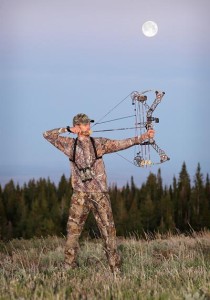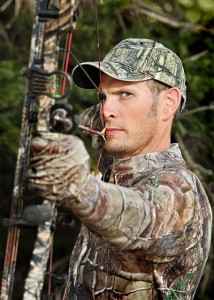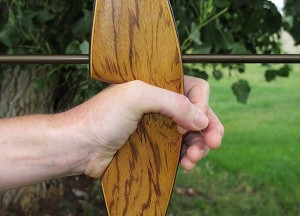Extending Your Effective Range with Compound Bows
Let’s say you’ve mastered the fundamentals of archery, but you’re stuck with an effective shooting range of 50 yards. Any farther and you begin to miss the 9-inch bullseye. At this point, how do you extend your range?
Extending your effective range starts with shooting a flatter arrow trajectory (reducing the arc of the arrow). There are only three ways to do this.
#1. Increase Draw Weight
First, you need to transfer more energy to your arrow by increasing your bow’s draw weight. Assuming your bow isn’t maxed out already, you can increase draw weight by simply tightening down the limb bolts. Depending on your bow, this will increase draw weight by 3-4 pounds per full turn. Just be sure to tighten both limb bolts equally or it will mess up your tuning.
#2. Reduce Arrow Weight
The second way to flatten arrow trajectory is by reduce your arrow weight. This should only be considered if your arrows are already overweight for the game you’re hunting. For example, you wouldn’t want to go below 400 grains (total arrow weight) for deer, or 450 grains for elk. If you’re strictly a target shooter, then you can go as light as you want. However, going too light can be hard on your bow because not enough energy is transferred to the arrow.
Now, the only way to reduce arrow weight is by using lighter points, lighter fletchings, and/or shortening your arrows. In most cases it would be best to start with a brand new set arrows from your preferred manufacturer. Look for an arrow with a low GPI (grains per inch). Lighter arrows are generally rated around 8.0 GPI or less.
#3. Super Tune Your Bow
The third way to flatten arrow trajectory is by super-tuning your bow. Tuning improves arrow flight by removing slight deviations in your setup, resulting in more efficient arrow flight. The longer it takes for an arrow to straighten out in flight, the more energy is lost due to air friction. Too much wobble also decreases arrow penetration.
Super-tuning starts with a good paper tuning. This involves adjustments to your arrow rest and/or nocking point. Throughout this process you may need to adjust your bow’s cam timing or cam lean. These adjustments require the use of a bow press, so unless you have the one it would be best left to a professional.
Additional Methods
Aside from flattening your arrow trajectory, there are a few other ways to increase accuracy. They include:
- Regularly practice shooting at very long distances. This makes shorter distances much easier.
- Practice “surprise release” drills. This is especially important for people struggling with target panic.
- Shoot smaller diameter arrows that are more wind resistant.
- Consider using a one-pin sight. Single pin sights provide better target visibility, especially at longer distances.
- If you are shooting an older bow, consider upgrading to a newer, faster bow, preferably with two cams. Single-cam bows tend to shoot slower because they don’t transfer as much energy as modern two-cam “speed bows.”
Conclusion
There you have it, everything you need to expand your effective range. With today’s fast-shooting, dual-cam bows you don’t have to sacrifice speed or energy to get a flat-shooting arrow. Just make sure your bow is finely tuned.
When it comes to hunting, shot placement is more critical than speed or kinetic energy. Shot placement means putting the arrow in the precise kill zone for maximum damage.
Above all, make each arrow count during your practice sessions. Always shoot for quality over quantity.






